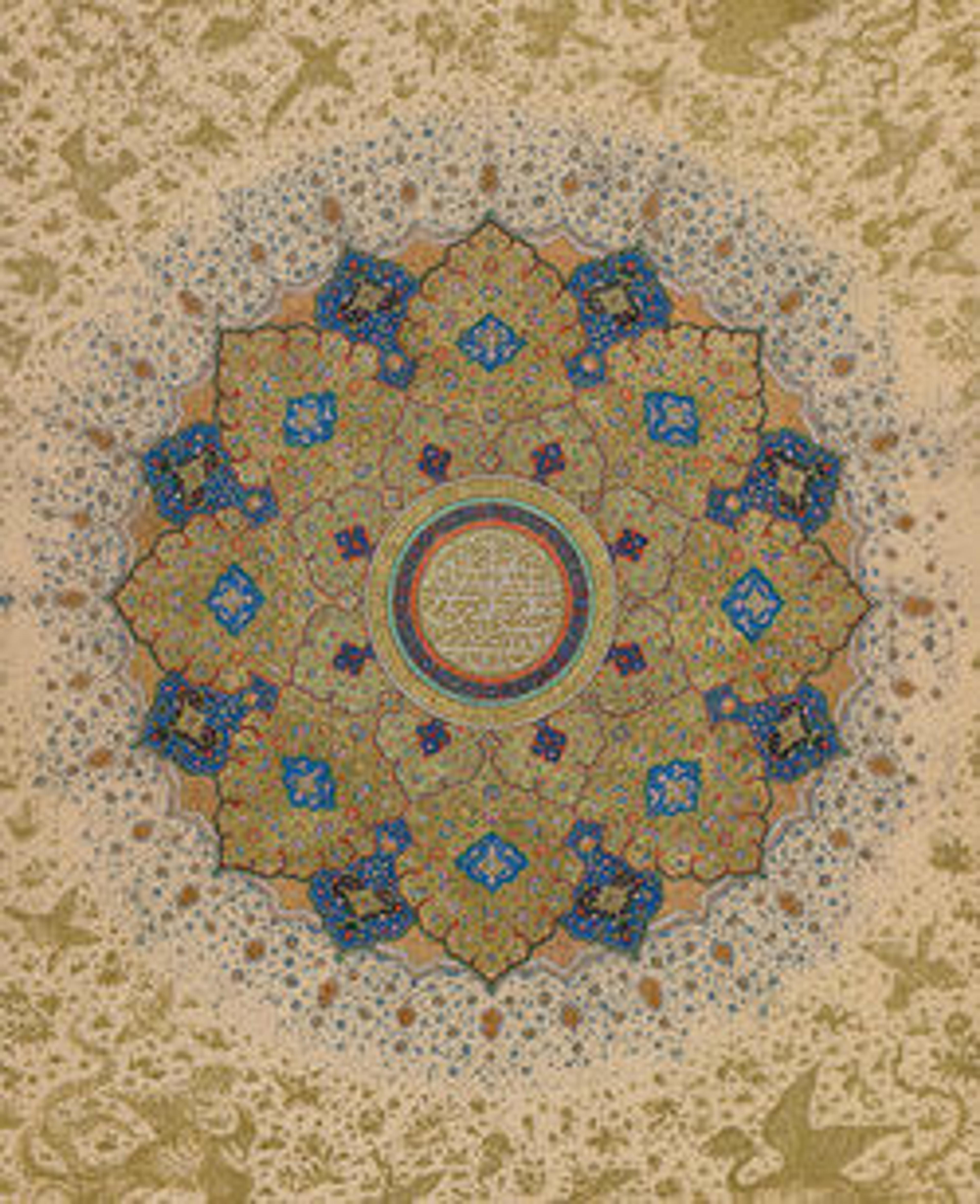Fragmentary Loom Width with Ogival Pattern
With its unusual eggplant‑purple background, gold medallions, and crisp, stencil‑like drawing, this textile is an exceptionally fine example of the luxurious Ottoman silk fabrics referred to as kemha. Employing bold patterns, such as this ogival lattice design, these textiles were highly valued throughout the Mediterranean and beyond. Many datable fragments survive in the form of religious vestments of various Christian communities from Sweden to Moscow. Considering its overall shape, this fragment probably once served as part of a chasuble—a garment worn by Christian clergy.
Artwork Details
- Title: Fragmentary Loom Width with Ogival Pattern
- Date: ca. 1570–80
- Geography: Attributed to Turkey, probably Istanbul
- Medium: Silk, metal wrapped thread; lampas (kemha)
- Dimensions: Textile: L. 75 in. (190.5 cm)
W. 26 in. (66 cm)
Mount: L. 56 3/8 in. (143.2 cm)
W. 30 3/4 in. (78.1 cm)
D. 1 in. (2.5 cm)
Wt. 36 lbs. (16.3 kg) - Credit Line: Anonymous Gift, 1949
- Object Number: 49.32.79a–y
- Curatorial Department: Islamic Art
More Artwork
Research Resources
The Met provides unparalleled resources for research and welcomes an international community of students and scholars. The Met's Open Access API is where creators and researchers can connect to the The Met collection. Open Access data and public domain images are available for unrestricted commercial and noncommercial use without permission or fee.
To request images under copyright and other restrictions, please use this Image Request form.
Feedback
We continue to research and examine historical and cultural context for objects in The Met collection. If you have comments or questions about this object record, please contact us using the form below. The Museum looks forward to receiving your comments.
